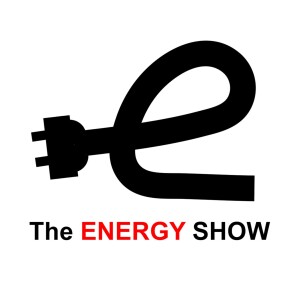
Solar and Storage in Hawaii with Marco Mangelsdorf
 2018-03-27
2018-03-27
Download
Right click and do "save link as"
Solar is clean and renewable and cheap. So more solar is better for everyone…except your local utility. Keep in mind that utilities generate their profits from selling electricity and building generation, transmission and distribution assets. When electricity customers install more solar, utilities make less money. Unfortunately, utilities have the political clout to enforce their monopoly on customers who would otherwise prefer less expensive rooftop solar. The biggest battles are emerging in relatively mature solar markets.
Over 15% of residential customers in some areas of Hawaii have rooftop solar. As a result, Hawaii is the first “test case” in the U.S. for high penetration solar. Faced with this loss of profits, the Hawaiian utilities clamped down on new solar installations by capping net metering, raising solar-specific rates, and in some cases simply prohibiting installations. Instead of upgrading the local grid to handle these two-way power flows efficiently, their knee-jerk reaction has been simply to limit solar. Their rationale for these limitations is questionable at best, especially at these still low penetration levels.
The impact on the Hawaiian solar market has been severe. Installations have dramatically slowed down and solar companies have gone out of business. The Solar Survivors (who have not been kicked off the island) are migrating to install battery storage systems which are compatible with new utility solar limitations, albeit at less favorable economics.
My guest on this week’s Energy Show is Marco Mangelsdorf, CEO of Provision Solar on Hilo. Marco has been installing solar since 2000 – and has an abundance of insights and advice for solar installers and customers throughout the U.S.
view more
More Episodes
Is There a MicroGrid in Your Future
 2018-12-12
2018-12-12
 2018-12-12
2018-12-12
Flow Batteries with Matt Harper from Avalon
 2018-12-05
2018-12-05
 2018-12-05
2018-12-05
Avoiding a Global Warming Disaster
 2018-11-28
2018-11-28
 2018-11-28
2018-11-28
The Sun Also Rises - At Night With Batteries
 2018-11-20
2018-11-20
 2018-11-20
2018-11-20
High Electric Bill - What Can I Do?
 2018-11-14
2018-11-14
 2018-11-14
2018-11-14
Utility Power Plant Economics
 2018-11-07
2018-11-07
 2018-11-07
2018-11-07
Energy Toolbase with Adam Gerza
 2018-10-24
2018-10-24
 2018-10-24
2018-10-24
Fuel Cells Are Making a Comeback
 2018-10-17
2018-10-17
 2018-10-17
2018-10-17
When Should I Clean My Solar Panels
 2018-09-27
2018-09-27
 2018-09-27
2018-09-27
The Commercial Solar Opportunity
 2018-09-19
2018-09-19
 2018-09-19
2018-09-19
Climate Change - Time to Start Panicking
 2018-09-12
2018-09-12
 2018-09-12
2018-09-12
Recycling Solar Panels with Sam Vanderhoof
 2018-08-29
2018-08-29
 2018-08-29
2018-08-29
Real World Solar Economics with Tom Beach
 2018-08-22
2018-08-22
 2018-08-22
2018-08-22
Upgrading Your Solar System
 2018-08-08
2018-08-08
 2018-08-08
2018-08-08
012345678910111213141516171819
Create your
podcast in
minutes
- Full-featured podcast site
- Unlimited storage and bandwidth
- Comprehensive podcast stats
- Distribute to Apple Podcasts, Spotify, and more
- Make money with your podcast
It is Free
- Privacy Policy
- Cookie Policy
- Terms of Use
- Consent Preferences
- Copyright © 2015-2024 Podbean.com





